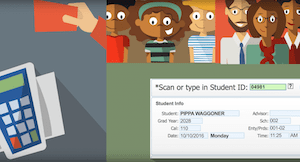
Can AI independently design an ecosystem in which students can grow and thrive?
Dr. Ashanti Bryant Foster once said, "A master schedule must be built with the same level of care and attention as a new home where a family will spend the next 20 years growing together." And that’s a tall order for a string of code that will never understand the emotional concept of family, growing, or indeed the next 20 years passing.
What if instead of delegating something sensitive to cut costs, AI and brilliant educators shared the load?
The pros
Outsourcing calculations saves on time and effort. Saving time protects wellbeing, which every educator must guard these days.Leaders walk a thin budget line and it’s getting thinner by the week. By thinking strategically and outsourcing the number crunching to AI, district leaders are able to make the most of funding, tailor class size, even increase teacher retention.
80 percent of the budget goes to staffing, so using every minute teachers spend thoughtfully and assigning FTE and 9-month roles with precision, a master schedule can meet more needs without burning out teachers, over-relying on substitutes, scrambling to hire mid-year and more.
Time spent on making a master schedule is important, but deadlines loom. The crunch and uncertainty often leads educators to punt and roll over last year’s schedule, prolonging headaches without even realizing. Thoughtful edtech solutions can offer ways to limit effort and resources—or at least make it seem quicker for end users in busy classrooms.
The cons
If we mention the danger of rolling over the master schedule without a second thought, we also have to caution against the unchecked use of AI. Same as any technology solution, some AI champions have become more choosy about what they delegate and remove their own nuance from.Humanity always comes first in K–12. AI cannot empathize with a teacher who is struggling—but thoughtful leaders can keep individual coaching needs in mind. AI will never become an expert in child development when it can only look back in history, not down at it occurring.
Most of the budget goes to paying humans, and 100% of the impact made in classrooms comes from building caring relationships, so while things sound good on paper, reality is a different (flesh, blood, snacks, and tears) animal.
The compromise
🧠 Let’s not overthink it, but let’s give it our full imagination and heart.🎢 Thoughtful admin leads the process with expert teams and make it hum along.
🧮 AI can help with the logic puzzling of it all.
🚦 Thoughtful experts (a fresh group? Design your best process.) double- or even triple-check. Every human agrees before it moves to prime time.
The future
The truth about artificial intelligence tools is that they will tempt some users to opt out of the humanity of it all: doing important work for people who matter. As with everything else in K–12, what you get out is what you put in. Does that mean phoning in a master schedule freshly spat from ChatGPT? Or does it look like smart, intuitive educators using high-tech tools to create the perfect master schedule home for your school family to thrive?The choice is yours. Good luck!
WHAT'S NEXT FOR YOUR EDTECH? The right combo of tools & support retains staff and serves students better. We'd love to help. Visit skyward.com/get-started to learn more.

|
Erin Werra Blogger, Researcher, and Edvocate |
Erin Werra is a content writer and strategist at Skyward’s Advancing K12 blog. Her writing about K12 edtech, data, security, social-emotional learning, and leadership has appeared in THE Journal, District Administration, eSchool News, and more. She enjoys puzzling over details to make K12 edtech info accessible for all. Outside of edtech, she’s waxing poetic about motherhood, personality traits, and self-growth.




